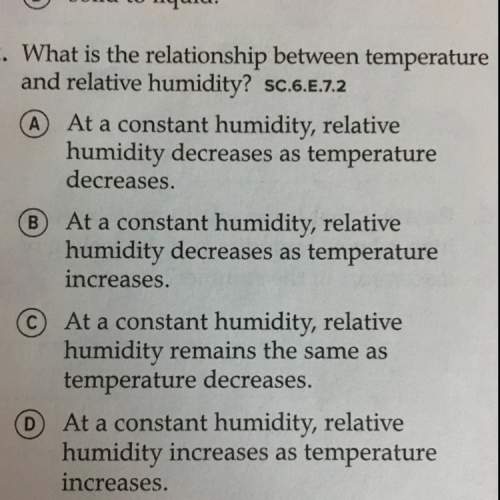
DNA carries the information needed to make proteins. How is this information used to make proteins?
A. Ribosomes "read" the DNA and translate each group of three nucleotides into amino acids to build proteins, with the help of mRNA and tRNA.
B. DNA is transcribed into mRNA. Ribosomes "read" the mRNA and translate each group of three nucleotides into amino acids to build proteins, with the help of tRNA.
C. mRNA is transcribed into tRNA. Ribosomes "read" the tRNA and translate each group of three nucleotides into amino acids to build proteins.
D. DNA is transcribed into tRNA. Ribosomes "read" the tRNA and translate each group of three nucleotides into amino acids to build proteins, with the help of mRNA.

Answers: 1


Another question on Biology

Biology, 22.06.2019 10:30
The greenhouse effect a. something that has occurred for millions of years b. an unnatural phenomenon caused by humans that maintains earths temperature range. c. the results of the differences in the angle of the suns rays d. an unnatural phenomenon that causes heat energy to be radiated back into the atmosphere
Answers: 1

Biology, 22.06.2019 14:10
What do we call the process when two dominant alleles are expressed and do not blend? a.incomplete dominance b.codominance c.multiple alleles
Answers: 2

Biology, 22.06.2019 15:30
Bio molecules are essential to all living things. which biomolecule is “d” from the table
Answers: 3

Biology, 22.06.2019 17:30
Ms. w, a 21-year-old woman, came into a clinic after suffering a deep laceration on her foot while walking barefoot around her yard. the wound was cleaned, sutured, and bandaged, and she was released to return home after receiving tetanus antitoxoid. within 72 hours, the wound area was red and swollen, the suture line was dark in color, and it was accompanied by severe throbbing pain. ms. w had a high fever, her heart felt like it was racing, and she was finding it hard to concentraten even on simple tasks. she returned to the clinic and was immediately taken to the hospital. following lab tests, a diagnosis of acute necrotizing fasciitis was made. discussion questions 1. explain why ms. w. received a tetanus antitoxoid before leaving the hospital. (see chapters 3 and 4, infection and passive immunity.) 2. explain how acute necrotizing fasciitis developed in this case and the pathophysiology involved. (see acute necrotizing fasciitis.) 3. what is the potential outcome for ms. w if antibiotic drugs do not reduce the infection quickly?
Answers: 3
You know the right answer?
DNA carries the information needed to make proteins. How is this information used to make proteins?...
Questions


History, 10.10.2019 22:00


English, 10.10.2019 22:00








Computers and Technology, 10.10.2019 22:00


Computers and Technology, 10.10.2019 22:00

Chemistry, 10.10.2019 22:00

Mathematics, 10.10.2019 22:00








